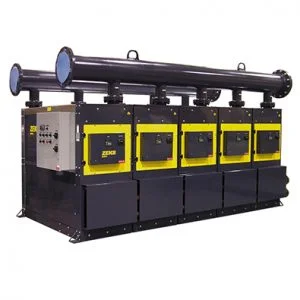
 Maybe you need really, really dry air.
Maybe you need really, really dry air.Maybe that air is even dryer than -40⁰ F dew point achieved with a typical regenerative desiccant dryer. Maybe you need a -100⁰ F dew point. It’s a rare requirement, but there are applications for it. You would do well to consider Fick’s law before proceeding.
I’ll admit I wasn’t familiar with Adolf Fick, who in 1855 postulated his law of diffusion. I must have missed it in my years of sitting (sleeping) in a classroom. But I was struck by how this law applies to dry air when reading a section of the CAGI Compressed Air and Gas Handbook.
Fick’s Law states that “The rate of diffusion in a given direction is proportional to the negative of the concentration gradient.” Diffusion in this case means the process where two gases intermingle moving from a region of high concentration to a low one. In a compressed air system the law applies to the difference in moisture vapor outside the system to the dry air within the pipe.
When it comes to super dry air, that differential, or gradient, is quite extreme compared to moist ambient air. So any leaks in the piping downstream of a dryer will allow diffusion of atmospheric water vapor to enter the compressed air line. Even if it is at full line pressure.
The clear implication is that proper piping material should be used, and that a vigilant eye be maintained on any leaks in the piping. We have spoken about proper piping material before in our post here: Gardner-Denver Quick-lock Tubing.
But here’s a more startling fact mentioned in the CAGI handbook: To purge residual moisture out of a piping system downstream of a dryer takes an extra ordinary amount of dry air. The book states that tests to obtain a 94 deg. F dew point takes a mind-boggling (and expensive) 1,000,000 cubic feet of air dried to that dew point for every 1 cubic foot of piping volume. For reference a cubic foot of 1 inch schedule 40 pipe has a length of 166.7 feet.
What ever your air needs are, if you need extremely dry air then you need to talk with a specialist to make sure you have all your bases covered. Your system might not be able to handle the demand.


